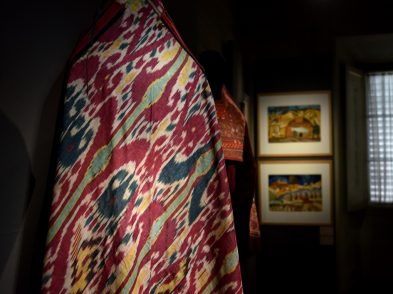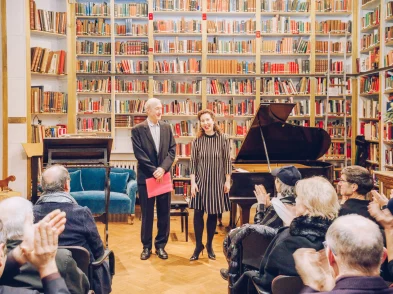This is a chapter from Jane
Fortune’s book
Invisible Women:
Forgotten Artists of Florence
Suspicious that artist
Elisabetta Sirani (1638-1665) had been poisoned by an envious maid, her father
forced authorities to exhume her corpse from a vault in the Bolognese church of San Domenico. Thus, the body of the
27-year-old artist, whose oeuvre equalled more than six times her age, was
examined by the court. The family’s maid, Lucia Tolomelli, was accused, exiled,
but later acquitted when medical experts discovered the painter had most likely
died of gastric ulcers. Art historians today-who marvel at the 170 works Sirani
produced during her short but vigorously intense lifetime-guess that her
fragile health was a result of exhaustion and overwork.
History remembers Sirani’s
father and first teacher, Giovanni Andrea Sirani, who was the principal
assistant to high-baroque painter Guido Reni, as a gout-ridden, money-hungry
Bolognese painter who spurred his daughter to take on an exorbitant number of
commissions-whose proceeds he himself collected. Elisabetta Sirani learned to
paint with elegance and refined classicism during her training with Reni, whose
style recalled that of Raphael. In 1655, when her father could no longer hold a
paintbrush because of arthritis, she took over his workshop; at 16 she became
the sole provider for the Sirani family. Her prolific career can also be
credited to her own innate speed in producing highly popular portraits and
widely praised allegorical and religious works. Though Counter-Reformation
Bologna was famous for producing astoundingly successful women artists,
Sirani’s clients were initially suspicious about the authenticity of her works.
Certainly a lovely woman painter who produced deeply complex iconographical
works at lightning speed had a team of hidden, probably male, collaborators.
To squelch these rumors and
testify to her skills, Sirani invited dignitaries from all over the world to
attend her public painting sessions, where wealthy commissioners and
wonder-eyed common folk gathered to witness the bold brushstrokes that became
many of her masterpieces, particularly those depicting daring female subjects.
One such witness was Grand Duke
Cosimo III de’ Medici, whom Sirani welcomed to her studio in 1664. The duke
marvelled at her rendition of his uncle Leopoldo’s portrait and decided, on a
whim, to order a Madonna painting to take home for himself. Sirani produced the
commission on the spot, in hopes the work would dry before he was ready to
leave at the end of his afternoon visit.
A member of the Accademia di San
Luca in Rome,
Siriani inspired poets and orators who wrote of her praises. In Sirani’s
eulogy, Giovanni Piccardini, a lawyer from the University
of Bologna, honored her as ‘the glory
of the female sex, the gem of Italy,
the sun of Europe.’ Shortly after her death he
wrote Il Pennello Lagrimato, which captured the love her fellow citizens
professed for her. A biography celebrating her brief life was also published by
her mentor, Carlo Malvasia (with Crespi and Zanotti) four years later.
Well versed in both classical
and biblical literature, she was widely praised by the Catholic Church for her
Virgin and Child paintings and, at the same time, she eagerly portrayed
classical themes, which she intimately interpreted in a personal manner. An
independent professional painter by the time she was 17, she kept a catalogue
of her works. In addition to her 170 oil paintings, she produced 14 etchings
and a number of drawings, 31 of which are currently in Florence’s Gabinetto di disegni e stampe.
Executed in charcoal, pen and ink, or red or black pencil, these monochrome
sketches include five illustrations of the Virgin and Child, as well as several
figure drawings and other works depicting cherubs, saints and angels. Love
holding a heart in his hand and Saint Mary Magdalene taking off her worldly
ornaments are especially noteworthy. In 1994, the U.S. Postal Service selected
Sirani’s Virgin and Child, which is in the National Museum of Women in the Arts
in Washington, D.C., to print on 1.1 billion Christmas
stamps.
In her 1859 book Women
Artists of All Ages and Countries, Elizabeth F. Ellet writes ‘Sirani has
been pronounced a complete artist; unrivaled by any of her sex in fertility of
invention, in the power of combining parts in a noble whole, in knowledge of
drawing and foreshortening, and in the minute details that contribute to the
perfection of a painting. Had she lived longer she would have equalled any
artist of her time.’








